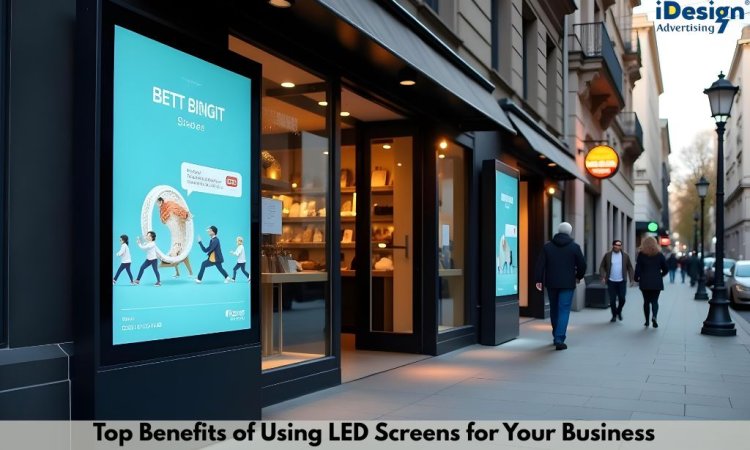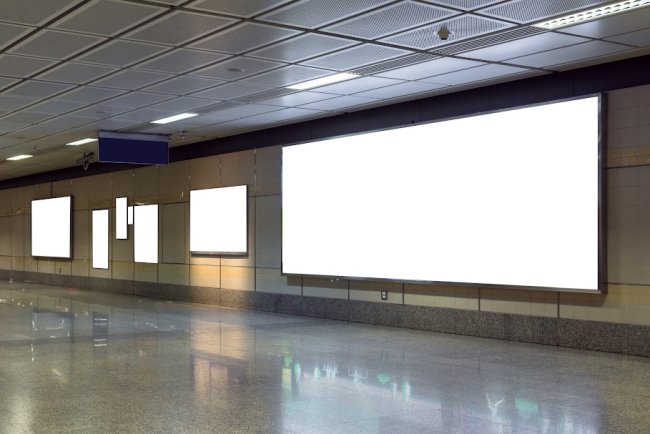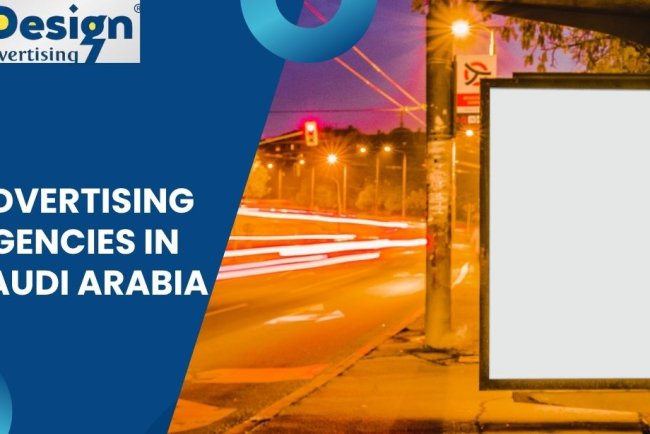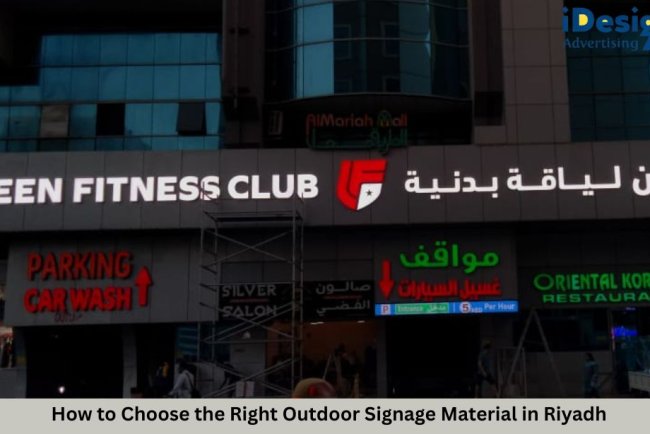Top Benefits of Using LED Screens for Your Business
Understand what LED screens are, how they work, and why businesses in Riyadh and the GCC use them. Explore indoor, outdoor, rental, and flexible formats, plus specs, benefits, and the latest digital signage trends.

LED screens have become one of the most effective ways for businesses to win attention in busy streets, malls, and events across Riyadh and the GCC. Unlike static prints, an LED screen display lets you schedule day-parted content, push real-time offers, and run Arabic/English creatives with crisp brightness indoors and the high-nits output needed for an outdoor LED screen. Whether you operate retail, F&B, healthcare, education, or corporate venues, digital signage in Riyadh helps you inform, upsell, and build brand recall consistently.
This guide explains, in plain language, what LED screens are and how they work; the primary types including indoor, outdoor, rental, and flexible LED screen formats; the top benefits; a quick comparison with traditional media; and how these displays boost customer engagement. You'll also learn which industries gain the most, how to choose the correct specs and software, and the latest LED trends shaping the GCC market.
What is an LED Screen and How Does It Work?
An LED screen display is a grid of tiny light-emitting diodes arranged as pixels. Each pixel mixes red, green, and blue to create full-colour images. Panels ("modules") tile into cabinets and frames to build any size lobbies, shopfronts, stage backdrops, or an outdoor LED screen.
How it works
1. Content source: a media player or cloud CMS schedules videos, images, and live data (ideal for digital signage in Riyadh with Arabic/English layouts).
2. Controller: a sending card maps the content to the screen.
3. Receiving cards & drivers: inside each cabinet, driver ICs scan rows/columns (e.g., 1/8, 1/16) to light the LEDs.
4. Pixels: SMD packages provide wide viewing angles; older DIP packages are used for ultra-bright billboards.
5. Power & thermal: regulated PSUs and heat management keep performance stable in GCC heat.
Key specs
1. Pixel pitch (P): mm spacing between pixels; smaller P = sharper. Minimum viewing distance ≈ pixel pitch in meters (P3 ≈ 3 m).
2. Brightness: indoor 600–1,200 nits; outdoor 4,500–8,000 nits with IP65/54 weather ratings.
3. Refresh/grayscale: ≥1,920 Hz and 14–16-bit to avoid flicker and banding.
4. Curved or flexible LED screen options enable seamless creative shapes.
Types of LED Screens and Their Business Uses
1. Indoor fine-pitch LED (P1.2–P4): High-resolution LED screen displays for retail walls, corporate lobbies, hotels, clinics, and classrooms. Great for brand films, product explainers, wayfinding, and menu boards.
2. Outdoor LED screen (P4–P10+): Weatherproof, high-brightness billboards, building façades, stadium perimeters, and roadside totems. Ideal for launches, seasonal offers, and 24/7 brand presence.
3. Shop-window/high-bright LEDs: Window-facing displays that punch through daylight; banks, telecoms, pharmacies, and fashion stores use them for price drops, new arrivals, and flash sales.
4. Rental/Stage LED walls: Lightweight cabinets with fast rigging for conferences, weddings, concerts, and exhibitions—optimised for live cameras with high refresh and low moiré.
5. Flexible/curved LED screen: Concave/convex wraps and column claddings to create immersive shapes in auto showrooms, museums, premium boutiques, and experience centres.
6. Transparent LED (glass LED): Keeps storefront visibility while animating the façade—popular in malls, airports, and car dealerships.
7. LED posters/standees (digital totems): Portable 9:16 plug-and-play displays for cafes, salons, clinics, and pop-ups; easy "drop-in" digital signage Riyadh deployments.
8. LED floor & interactive tiles: For launches, museums, esports zones—turn the floor into content with motion-triggered effects.
9. Control-room walls: 24/7 mission-critical video walls for utilities, logistics, and security monitoring.
10. Scoreboards & perimeter LED: Sports venues use them for live stats, wayfinding, and sponsor loops.
The Top Benefits of Using LED Screens for Business
1. Attention that stops footfall: Motion, contrast, and high brightness make an LED screen display hard to miss. An outdoor LED screen maintains visibility in direct sunlight, keeping its content readable from long distances.
2. Real-time, day-parted messaging: Schedule breakfast, lunch, and evening creatives; swap promos in minutes; run Arabic/English versions—all from a central CMS for digital signage Riyadh networks.
3. Hyperlocal agility: Launch city-specific prices, countdown timers, weather or prayer-time triggers, and live inventory to match demand in each location.
4. More campaigns per square metre: Rotate multiple messages and product categories on the same surface; no reprinting or logistics delays.
5. Brand control & compliance: Approvals, version history, and locked templates ensure every branch shows on-brand, legally compliant content.
6. New revenue streams: Sell sponsorship slots to partner brands, upsell supplier co-op ads, or promote in-store services during off-peak hours.
7. Interactive engagement & data: Add QR/NFC, app deep-links, and UTM tags to measure scans, visits, and conversions—closing the loop between screen and sale.
8. Durable and modular: Long service life with field-replaceable modules and power supplies; weather-rated cabinets for outdoor use; flexible LED screen options unlock curved façades and immersive installs.
9. Operational efficiency: Lower content production waste than print, fewer site visits, remote monitoring/alerts, and declining LED power consumption per nit.
10. Scalable network: Start with one store, expand to a city-wide fleet synced to your CRM, POS, and marketing calendar for seasonal bursts and always-on branding.
LED Screens vs Traditional Advertising: A Quick Comparison
1. Visibility & impact: Motion, brightness, and contrast on an LED screen display outperform static prints and lightboxes—especially for an outdoor LED screen in daylight.
2. Speed of updates: LED = new creative in minutes via CMS; print/billboards = days/weeks and logistics.
3. Targeting & relevance: Dayparting, geo-variants, and data triggers (weather, events) vs one-size-fits-all static copy.
4. Measurement: QR/NFC, UTM links, POS tie-ins, and dwell-time analytics vs limited recall surveys for traditional.
5. Cost efficiency over time: Higher upfront CAPEX for LED, but lower per-message OPEX (no reprints, fewer site visits) and more campaigns per surface.
6. Creative freedom: Video, motion graphics, Arabic/English layouts, 3D illusions, and flexible LED screen curves—impossible with print.
7. Governance & compliance: Cloud workflows keep franchises on-brand; print relies on manual checks.
8. Sustainability: Less paper, ink, and transport.
9. Local relevance: Networked digital signage in Riyadh adapts instantly to city offers and seasonality.
How LED Screens Improve Customer Engagement
LED screens lift engagement by pairing motion with timely prompts at the point of decision.
1. Clear CTAs: "Scan to order," "Tap for offer," "WhatsApp now" on an LED screen display trigger action.
2. Interactive bridges: QR/NFC or short links jump viewers to menus, coupons, or app installs.
3. Contextual content, such as dayparting, weather or prayer-time triggers, and live inventory, feels personal.
4. Social proof: Local hashtags, influencer clips, and moderated reviews build trust.
5. Wayfinding & queues: Directions, token numbers, and micro-content shrink perceived wait time.
6. Test & measure: Rotate variants, track scans with UTM tags, and match to POS results.
7. Outdoor impact: A bright outdoor LED screen stops passers-by; geo-targeted copy drives footfall ideal for digital signage Riyadh.
Industries That Benefit the Most from LED Screens
1. Retail & malls: Window-facing LED screen display for launches, price drops, and new arrivals.
2. F&B & QSR: Dayparted menus, upsell combos, queue info.
3. Healthcare & pharmacies: Token numbers, wellness tips, insurance promos.
4. Education & campuses: Timetables, events, wayfinding.
5. Corporate & banks: Lobby video walls, investor updates, branch offers.
6. Events & weddings: Rental walls and flexible LED screen backdrops for immersive stages.
7. Real estate & automotive: 3D walkthroughs, car unveilings, lead-capture CTAs.
8. Hospitality & tourism: Concierge info; façade outdoor LED screen for seasonal campaigns.
9. Airports & transport: Departures, safety, and inventory.
10. Sports & arenas: Scoreboards, sponsor loops.
11. Government & civic: Smart-city notices, digital signage Riyadh service alerts.
How to Choose the Right LED Screen for Your Business
1. Goal & content mix: Define use (branding, promos, wayfinding) and assets (video, Arabic/English, live data). This determines the pixel pitch, aspect ratio, and CMS for digital signage networks in Riyadh.
2. Viewing distance → pixel pitch: Minimum comfortable distance ≈ pixel pitch in meters (P3 ≈ 3 m, P6 ≈ 6 m). Close-up retail = fine pitch; roadside = larger pitch outdoor LED screen.
3. Brightness & protection: Indoor 600–1,200 nits; outdoor 4,500–8,000 nits with IP65 front/IP54 rear, UV protection, anti-glare.
4. Refresh & grayscale: ≥1,920 Hz (live camera: 3,840 Hz), 14–16-bit for smooth gradients.
5. Form factor: Flat walls for menus; flexible LED screen or curved modules for columns/façades; transparent LED for shopfront visibility.
6. Maintenance & uptime: Front-service modules, hot-swappable PSUs, remote monitoring/alerts.
7. Power & TCO: Compare watts/m² at target brightness; check intelligent dimming and auto-scheduling.
8. Controller & CMS: Cloud control, role permissions, RTL/Arabic support, API links to POS/CRM.
9. Compliance & warranty: Local permits, mounting safety, approved electricals, SASO/CE where applicable; on-site warranty and spares SLA.
LED Screen Trends in Riyadh and the GCC
1. 3D/Anamorphic DOOH: Façade illusions on large outdoor LED screens boost dwell time and social shares.
2. Fine-pitch & microLED: Boardrooms, control rooms, and luxury retail are adopting P1.x and microLED for cinema-grade clarity.
3. Energy efficiency: Auto-dimming by ambient light, low-power driver ICs, and more innovative scheduling to reduce kWh consumption.
4. Programmatic DOOH: Cloud CMS + SSPs to buy/sell screen inventory by audience/time.
5. Flexible & curved installs: Flexible LED screens wrap columns and atriums for immersive brand zones.
6. Transparent shopfront LEDs: Animate glass without blocking visibility.
7. Data-triggered content: Weather, prayer times, traffic, live pricing.
8. Arabic-first UX: RTL layouts, dual-language templates for digital signage Riyadh networks.
9. Compliance focus: Outdoor permits, SASO-rated power gear, safe mounting, and remote health monitoring.
Conclusion
LED screens provide a controllable, measurable canvas to capture attention and drive sales. With the right pixel pitch, brightness, and CMS, a single LED screen display can replace stacks of posters and keep every message on-brand and up to date. Whether you start with one indoor wall or an outdoor LED screen network across Riyadh, plan content first, pick reliable hardware, and track conversions. Done right, digital signage in Riyadh becomes a profit engine not just a screen.
FAQ
1) LED vs LCD—what's better for business?
An LED screen display uses self-lit diodes for higher brightness, contrast, modular sizes, and lower long-term OPEX than most LCD walls.
2) What pixel pitch should I choose?
Use viewing distance ≈ pixel pitch (meters)—P3 ≈ 3 m, P6 ≈ 6 m.
3) How bright is it for an outdoor install in Riyadh?
Aim 5,000–8,000 nits with IP65 front protection for a durable outdoor LED screen.
4) Can I use a flexible LED screen on columns?
Yes choose bendable modules; confirm minimum radius, service access, and safety mounts.
5) How do I manage content across branches?
Cloud CMS with Arabic/English templates, roles/approvals, and APIs—ideal for digital signage Riyadh networks.
6) What about power bills?
Select efficient driver ICs, enable auto-dimming, and schedule off-hours to reduce kWh usage.
7) Do I need permits/compliance?
Outdoor needs municipal permissions, certified structures, and SASO-compliant electrical gear.
8) Lifespan and maintenance?
Typical LED life is 80k–100k hours; we prefer front-service modules, spare PSUs, and remote monitoring.
9) How do I measure ROI?
Use QR/NFC, UTM links, and POS matches to attribute views to sales.
10) Warranty to request?
On-site warranty, local spares SLA, and 24/7 support with uptime targets.
What's Your Reaction?















